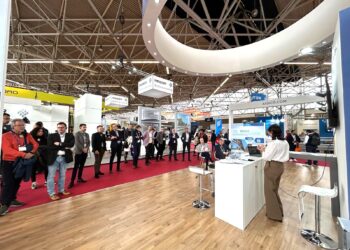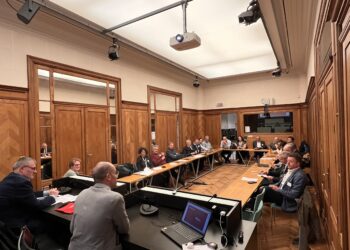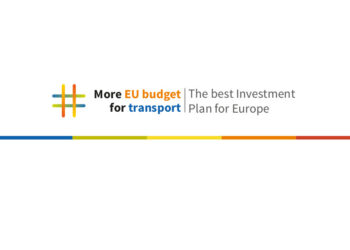
Brussels | 07 March 2024
The European Road Federation (ERF) Director General delivered a comprehensive overview of the European road infrastructure sector trends during the recent webinar titled “Market Update,” organized by the Committee for European Construction Equipment (CECE). CECE, headquartered in Brussels, is an organization dedicated to representing and advancing the interests of European construction equipment and related industries.
The webinar was moderated by Roma Guziak, CECE Senior Communications Manager who presented the video CECE issued for the presentation of their 2024 annual report giving valuable insights regarding the construction industry performance over 2023: this year marked a clear decline given the geopolitical crisis and inflation, resulting in a total of 10% decline in European sales being the road machinery the major contributor to those declines.
This year witnessed a pronounced downturn, driven by geopolitical crises and inflationary pressures, resulting in a significant 10% drop in European sales. Among the contributing factors, road machinery emerged as the primary catalyst for these declines.
After a warm welcome message from José Antonio Nieto, President of CECE, Sebastian Popp, CECE’s Economic Affairs Manager provided key figures from 2023: he defined 2023 as a year of transition because of the decline of new orders intake across all segments of construction materials with variety in severity. He also presented the 2023 overview in individual markets mentioning differences through countries: Spain for example is back in the top 10 markets while Italy remains in the 4th place. He concluded by saying that while certainly there are some concerns and that 2023 registered a decline, overly negative sentiments are not justified because the European market proved resilient and is still on high levels. Subsequently, Christophe Nicodème presented insightful data extracted from the ERF road statistics of 2023. Notably, ERF has been releasing road statistics annually since 2001, transitioning from paper publications to exclusive online publications on the ERF website since 2016.
The ERF statistics draw upon a variety of reliable sources including Eurostat, OECD/ITF, and ACEA, compiling data to unveil interesting trends in road transport and infrastructure. The 2023 statistics highlighted how road transport stays as the preferred mode in both freight and passenger transport. For instance:
- In the EU 27 inland transport modal split for 2020, roads accounted for 74.4% of tonne-kilometers (tkm).
- In the passenger transport, modal split for EU27 in 2020, passenger cars represented 80.6% of passenger kilometers (pkm). Notably, this figure marked a 5% increase from previous years, attributed to restricted usage of public transport due to COVID-19 measures.
Despite the sustained dominance of road transport, a deeper analysis of the 2021 financing split from the European Investment Bank (EIB) reveals a disparity. EIB loans for transport in 2021 allocated a mere 15% to road infrastructure compared to 59% for railways. Moreover, examining a 20-year period from 2000 to 2021, there’s a clear decline in road funding within the distribution of infrastructure investment across the EU 27.
The ERF Director General emphasized the critical need for investment in road maintenance, preservation, and adaptation to evolving mobility trends. Addressing challenges such as the aging infrastructure within the EU, resilience against natural disruptions, and accommodating the impact of new vehicle technologies (e.g., electric, heavier, larger) on road infrastructure and equipment, including barriers, remains essential.
Riccardo Viaggi, Secretary General of CECE, provided an outlook for 2024: 2024 will probably see a double-digit drop in sales with major variation between segments and countries however the overall situation should not be considered dramatic, he also mentioned that the continued decarbonisation could potentially increase variations amongst different trends. A dynamic Q&A session and concluding remarks closed the webinar.
Rewatch the webinar here
You can download CECE report with all figures here
-
Joint Manifesto: #MoreEUbudget4transport
April 2, 2024




